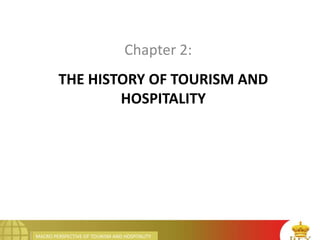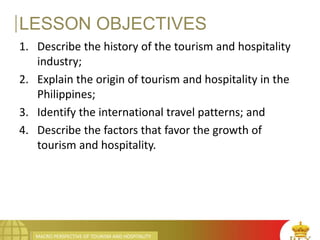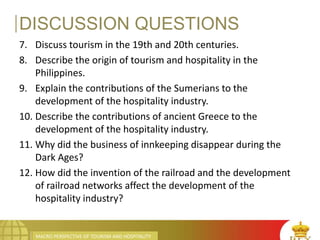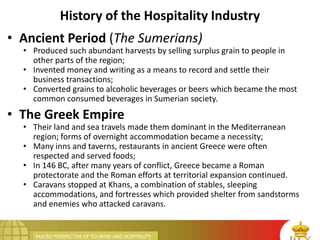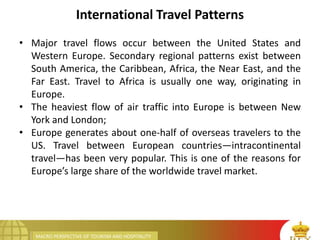The document provides an overview of the history and macro perspective of tourism and hospitality. It discusses:
1) The origins of tourism dating back to ancient times with early forms being trading and religious pilgrimages. Hospitality also began with ancient civilizations like the Sumerians.
2) The evolution of tourism through different time periods from the Medieval era to the Industrial Revolution, which stimulated tourism growth.
3) Key developments in the hospitality industry from ancient Greece to the modern era, including the contributions of pioneers like Cesar Ritz.
4) International travel patterns being dominated by flows between Europe and North America.
5) Factors that continue to drive tourism growth, such as
